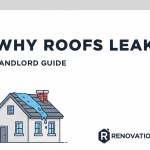I. The Impact of a Dirty Air Filter on Health
You might not know it, but the air inside your home can actually be more polluted than the air outside. In fact, the Environmental Protection Agency (EPA) estimates that indoor air can be two to five times more polluted than outdoor air, even in smoggy, urban areas.
How is this possible? The answer lies in your air filter. When your air filter is dirty, it becomes less effective at trapping harmful particles such as dust, pollen, and pet dander. This can lead to these particles circulating throughout your home, leading to an increase in allergies, asthma symptoms, and other respiratory issues. Furthermore, dirty air filters can allow harmful pollutants such as volatile organic compounds (VOCs) and fine particulate matter to build up in your home.
These pollutants have been linked to a variety of health problems, including heart disease, lung cancer, and chronic obstructive pulmonary disease (COPD). Therefore, maintaining a clean air filter is not just a matter of keeping your HVAC system running efficiently – it’s also a critical component of maintaining your health and well-being.
II. Understanding Different Types of Air Filters
Air filters come in different types and sizes, each designed to meet specific needs and HVAC systems. Here’s a brief overview:
- Fiberglass filters: These are the most common and cheapest filters available. They do a basic job of protecting your HVAC system from large particles of dust, but they do not filter out smaller particles that can harm your health.
- Pleated filters: These are a step up from fiberglass filters. They have a larger surface area, which allows them to capture more and smaller particles, including mold spores and some types of pollen.
- Electrostatic filters: These use static electricity to attract and trap particles. They can be washable or disposable, and they are more effective at trapping small particles than pleated filters.
- HEPA filters: These are the gold standard when it comes to air filters. They can trap 99.97% of particles that are 0.3 microns or larger, making them highly effective at improving indoor air quality.
Each type of filter has its advantages and disadvantages, and the best one for your home will depend on your specific needs and circumstances.
III. How Changing Your Air Filter Reduces Your Carbon Footprint
Keeping a clean air filter isn’t just good for your health – it’s also good for the environment. When your air filter is clogged with dirt and dust, it has to work harder to push air through. This means that your HVAC system uses more energy, which can contribute to higher carbon dioxide emissions.
By regularly changing your air filter, you can ensure that your HVAC system operates at peak efficiency. This can lower your home’s energy use, reduce your carbon footprint, and even save you money on your energy bills.
IV. Step-by-Step Guide to Changing Your Air Filter
Changing your air filter is a simple task that you can do on your own. Here’s how:
- Turn off your HVAC system: Before you change the air filter, make sure to turn off your HVAC system for safety.
- Locate your air filter: In most homes, the air filter is located in the return air duct or blower compartment before the return air reaches the air handler.
- Remove the old filter: Slide the old filter out of its slot. Be careful not to knock any dust or debris loose.
- Check the size: Check the size on the side of the filter, so you know what size to buy for replacement.
- Insert the new filter: Slide the new filter into the slot, following the arrows on the filter frame.
- Turn your HVAC system back on: Once the new filter is securely in place, you can turn your HVAC system back on.
Remember to check your air filter regularly (at least once a month). If it looks dirty, it’s time to replace it.
V. Other Regular Maintenance Tasks for a Healthier Home
Regular home maintenance goes beyond changing air filters. Here are some tasks that homeowners should perform regularly:
- Clean dryer vents: This can prevent fire hazards.
- Seal gaps around windows and doors: This can prevent drafts and lower your heating and cooling costs.
- Inspect the roof for damage: This can prevent leaks and costly water damage.
- Clean the gutters: This can prevent water damage and keep your home’s foundation strong.
- Test smoke and carbon monoxide detectors: This can protect your home and your family in the event of a fire or carbon monoxide leak.
VI. The Role of RenovationServices.com in Home Maintenance
Home maintenance can be a daunting task, but you don’t have to do it alone. At RenovationServices.com, we offer a range of services designed to help you keep your home in the best possible condition. From painting to complete renovation, we are committed to providing high-quality services that meet your needs.
Whether you need help changing your air filter or you’re looking for a complete home makeover, you can trust us to get the job done right. We understand that every home is unique, and we tailor our services to meet your specific needs.
VII. Conclusion
In conclusion, regular home maintenance, including changing your air filter, can significantly improve your home’s air quality, energy efficiency, and overall comfort. It also offers a way to reduce our environmental impact. By taking these steps and engaging the professional services of a company like RenovationServices.com, we can ensure our homes remain the sanctuaries we need them to be.






